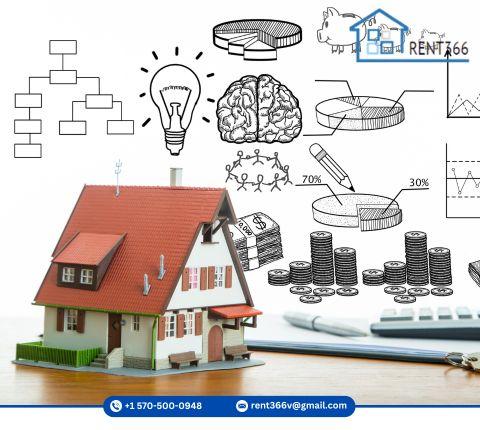Renting your first apartment is an exciting yet daunting experience. One of the most crucial aspects of this process is understanding how to budget effectively. This article will guide you through the budgeting process with practical examples and firsthand experiences to help you make informed decisions.
Understanding Your Budget
Setting the Stage: Before you start looking for rentals, it's essential to assess your financial situation. This involves calculating your monthly income and understanding your expenses.
Example: Emily, a recent college graduate, started her first job earning $3,000 per month. She realized that her total monthly income would be reduced after taxes, bringing her take-home pay to approximately $2,400. This figure helped her set a realistic budget for her rental search.
1. Determine Your Income
Calculate Your Income: Begin by listing all sources of income, including your salary, freelance work, and any side gigs.
Example: John works a full-time job that pays $2,800 per month and does freelance graphic design work that earns him an additional $600 monthly. His total monthly income is $3,400, which allows him to set a clear budget for his upcoming rental.
2. Estimate Your Monthly Rent
The 30% Rule: A commonly accepted rule is to spend no more than 30% of your gross monthly income on rent.
Example: Using John’s income of $3,400, 30% would be $1,020. He decided to look for apartments with a rent of $1,000 to stay within this budget and have some flexibility for other expenses.
3. Account for Utilities and Other Monthly Expenses
List All Expenses: In addition to rent, consider the costs of utilities, groceries, transportation, and other essentials.
- Utilities: Electricity, gas, water, and internet.
- Groceries: Monthly food expenses can vary widely; budgeting $300-$500 is a common range.
- Transportation: Costs for gas, public transport, or rideshare services.
- Insurance: Renters insurance typically costs between $15-$30 per month.
Example: Emily budgeted the following for her monthly expenses:
- Rent: $900
- Utilities: $150
- Groceries: $300
- Transportation: $100
- Insurance: $20
Total Monthly Expenses: $1,460. With her income, she still had about $940 left for savings and discretionary spending.
4. Factor in Upfront Costs
Understanding Initial Expenses: Before moving in, consider upfront costs such as the security deposit, first month’s rent, and application fees.
Example: When John found an apartment listed for $1,000, he learned that the security deposit would also be $1,000. Additionally, the landlord required the first month’s rent and a $50 application fee. So, John had to budget for:
- First Month's Rent: $1,000
- Security Deposit: $1,000
- Application Fee: $50
Total Upfront Costs: $2,050. He saved for these expenses during his last few months at home.
5. Create a Budget Spreadsheet
Organizing Your Finances: Creating a budget spreadsheet can help you keep track of income and expenses.
Example: Emily used Google Sheets to create her budget. She set it up as follows:
| Category | Estimated Cost |
|---|---|
| Income | |
| Salary | $2,400 |
| Freelance Work | $600 |
| Total Income | $3,000 |
| Expenses | |
| Rent | $900 |
| Utilities | $150 |
| Groceries | $300 |
| Transportation | $100 |
| Insurance | $20 |
| Total Expenses | $1,460 |
This helped her visualize her finances and make adjustments as needed.
6. Review and Adjust Your Budget
Being Flexible: As you start living in your new rental, it’s essential to review your budget regularly and make adjustments based on your actual spending.
Example: After moving in, Emily realized she was spending less on groceries than she had estimated. She adjusted her budget to allocate more funds for savings and leisure activities.
7. Seek Financial Advice if Needed
If you're uncertain about how to budget effectively or if you encounter financial challenges, don’t hesitate to seek advice from financial advisors or mentors.


Comments
There are no comments yet
Leave a Comment